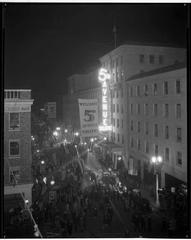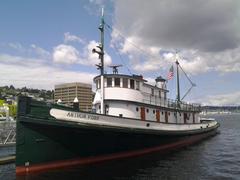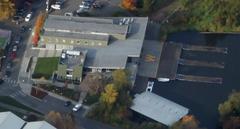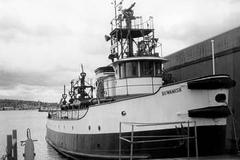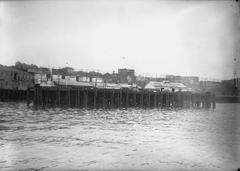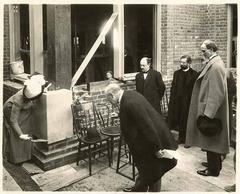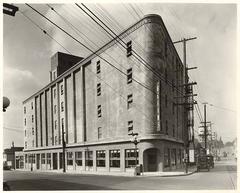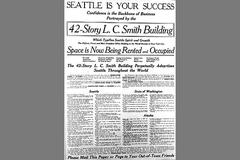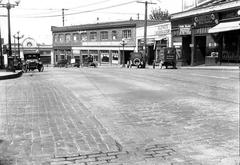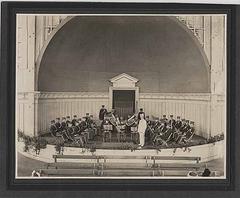
Chief Seattle Visiting Hours, Tickets, and Historical Sites in Seattle
Date: 04/07/2025
Introduction
Seattle, Washington, is a city deeply connected to its namesake, Chief Seattle (Si’ahl), a prominent 19th-century leader of the Suquamish and Duwamish peoples. Renowned for his diplomacy, oratory, and commitment to peace during a period of rapid change, Chief Seattle’s influence is woven throughout the region’s cultural and historical fabric. Understanding his life—marked by dual tribal heritage, critical negotiations like the Treaty of Point Elliott (1855), and a message of coexistence—offers vital insight into Native American history and the shaping of the Pacific Northwest (Britannica; HistoryLink).
Today, Seattle and its surroundings offer visitors a wealth of sites commemorating Chief Seattle’s legacy: his gravesite in Suquamish, prominent public monuments, and vibrant cultural centers such as the Duwamish Longhouse and Suquamish Museum. Annual events like Chief Seattle Days encourage engagement with Native traditions through ceremonies, storytelling, and community celebration (Suquamish Tribe; Visit Seattle).
This guide provides detailed information on visiting hours, ticketing (notably, most sites are free), accessibility, nearby attractions, and respectful cultural practices. It also addresses frequently asked questions about tours, etiquette, and how to connect meaningfully with Chief Seattle’s enduring legacy. Whether you are a history enthusiast, cultural explorer, or environmental advocate, delving into Chief Seattle’s story offers a profound perspective on the city’s origins and the vibrant Native communities shaping its identity (Cascadia Magazine; litbug.com).
Table of Contents
- Early Life and Tribal Heritage
- Rise to Leadership and Reputation
- Encounters with European and American Settlers
- Treaty of Point Elliott (1855)
- The Famous Speech: Context and Controversy
- Later Years and Death
- Visiting Chief Seattle Historical Sites
- Indigenous Presence and Cultural Centers
- Educational Initiatives and Public Art
- Cultural Etiquette and Responsible Tourism
- Practical Tips for Visiting
- Frequently Asked Questions (FAQ)
- Recommendations for a Meaningful Visit
- Supporting Indigenous Communities
- References
Early Life and Tribal Heritage
Chief Seattle (Si’ahl), born circa 1786 on or near Blake Island, was the son of Suquamish leader Shweabe and Duwamish mother Sholeetsa. This dual heritage positioned him as a bridge between two influential Coast Salish peoples (Britannica; HistoryLink; litbug.com; ya-native.com). Growing up immersed in Lushootseed language and cultural traditions, Seattle quickly gained recognition for his intelligence and oratorical prowess (Cascadia Magazine).
Rise to Leadership and Reputation
By the early 1800s, Si’ahl had become a leading figure among both the Suquamish and Duwamish. He was respected by neighboring groups and early settlers alike for his pragmatic leadership and commitment to peace during a time of increasing Euro-American settlement (Cascadia Magazine; Britannica; HistoryLink).
Encounters with European and American Settlers
The Puget Sound region saw growing numbers of non-Native explorers and settlers in the late 18th and early 19th centuries. By the 1850s, American settlers arrived in large numbers. Chief Seattle recognized the inevitability of these changes and sought to negotiate outcomes that would best protect his people’s interests. His baptism as “Noah” by Catholic missionaries exemplified his pragmatic adaptation to changing times (Britannica).
Treaty of Point Elliott (1855)
The 1855 Treaty of Point Elliott, negotiated with Governor Isaac Stevens, required tribes to cede most of their ancestral lands in exchange for reservations, compensation, and fishing rights (HistoryLink; ya-native.com). Chief Seattle signed the treaty, believing it was the best option in a difficult situation. While the treaty led to displacement, Seattle’s decision helped avoid further conflict during the Indian Wars of 1855–1856 (Britannica).
The Famous Speech: Context and Controversy
Chief Seattle’s 1854 speech, delivered in response to Governor Stevens’ proposal to purchase Native lands, has become legendary for its environmental and humanist themes. However, the widely circulated version, published by Dr. Henry A. Smith in 1887, is considered by many historians to be an embellished Victorian-era paraphrase rather than a direct translation (litbug.com). Despite authenticity debates, its messages of environmental stewardship and indigenous rights have resonated globally (thefamouspeople.com).
Later Years and Death
After the treaty, Chief Seattle resided on the Suquamish Reservation at Port Madison, continuing his role as spiritual and community leader until his death on June 7, 1866, at about 80 years old (HistoryLink; Britannica). He was laid to rest in the Suquamish Tribal Cemetery, which remains a site of remembrance (chiefseattle.com).
Visiting Chief Seattle Historical Sites
Chief Seattle’s Gravesite (Suquamish)
Location: Suquamish Tribal Cemetery, Suquamish, Washington—about 9 miles from the Bainbridge Island ferry terminal and a 45-minute drive from downtown Seattle (Ordinary Adventures; Visit Kitsap; Of Graveyards and Things).
Visiting Hours & Admission: Open daily from dawn to dusk; no admission fee or ticket required.
Features:
- Marble headstone (erected in 1890) and interpretive signage
- Cedar poles and carved canoes by Native artists, representing Chief Seattle’s life (Of Graveyards and Things)
- Adjacent to historic St. Peter’s Catholic Mission Church
Accessibility: Wheelchair accessible with paved areas, though some paths are gravel/grass.
Nearby Attractions:
- Suquamish Museum (history, art, and culture exhibits) (Suquamish Museum)
- Old Man House Park (site of Chief Seattle’s home)
- Suquamish waterfront
Visitor Etiquette:
- Be quiet and respectful; the cemetery is sacred to the Suquamish people.
- Discreet photography permitted; follow posted guidelines during ceremonies.
Chief Sealth Statue and Chief Seattle Fountain (Seattle)
Chief Sealth Statue:
- Location: Tilikum Place Park, intersection of 5th Avenue, Cedar Street, and Denny Way (Visit Seattle).
- Hours: Open year-round from dawn to dusk; free admission.
- Features: Bronze statue by James Wehn (1912), with interpretive plaques and surrounding public art.
- Nearby: Walking distance to Space Needle and Seattle Center.
Chief Seattle Fountain:
- Location: 100 Yesler Way, Pioneer Square (Chief Seattle Fountain)
- Accessibility: Wheelchair accessible; no admission fee.
- Setting: Serene memorial with sculptures and landscaping; excellent for reflection.
- Nearby: Pioneer Square art galleries, cafes, and Seattle Underground Tour.
Special Events: Chief Seattle Days
When: Annually in August on the Suquamish Reservation (Suquamish Tribe)
Activities:
- Gravesite Honoring Ceremony
- Powwow and Coastal Jam (dance, music, storytelling)
- Salmon Bake and communal meals
- Athletic tournaments and cultural demonstrations
Visitor Info:
- Free admission; drug- and alcohol-free event
- Check the Suquamish Tribe website for schedules
Guided Tours
- The Suquamish Museum and Duwamish Longhouse offer educational programs and guided experiences related to Chief Seattle and Native culture.
- Several local tour companies provide walking or biking tours focusing on indigenous history and Chief Seattle sites.
Tickets and Admission
- Chief Seattle’s gravesite, statue, and fountain: Always free to visit; no tickets required.
- Museums and cultural centers: Fees may apply; check official websites for details.
Indigenous Presence and Cultural Centers
Seattle’s Native community is supported by organizations like the Chief Seattle Club, which provides essential services and cultural programming for Indigenous people. Cultural centers such as the Duwamish Longhouse and Cultural Center and Daybreak Star Indian Cultural Center host events, exhibits, and workshops celebrating Native heritage.
Educational Initiatives and Public Art
Educational programs in Seattle schools and museums teach about Chief Seattle, local tribes, and critical treaties. Public art with Coast Salish motifs is found throughout the city, and museums like the Museum of History & Industry (MOHAI) and the Burke Museum feature Native-focused exhibitions (Historians.org).
Cultural Etiquette and Responsible Tourism
- Approach all sites and events with respect.
- Observe photography guidelines, especially during ceremonies.
- Support Native-owned businesses and purchase authentic art.
- Learn and observe tribal protocols, especially at cultural centers and events (IndianReservation.info).
Practical Tips for Visiting
-
Getting There:
- Suquamish is accessible via ferry to Bainbridge Island, then by car, bike, or bus (Ordinary Adventures).
- Downtown Seattle sites are walkable and accessible by public transit.
-
What to Bring:
- Weather-appropriate clothing (Seattle weather is variable year-round).
- Comfortable walking shoes; grave site paths may be uneven.
-
Accessibility:
- Most major monuments and cultural centers are wheelchair accessible.
-
Safety:
- Pioneer Square and downtown are generally safe during the day; be aware of surroundings.
Frequently Asked Questions (FAQ)
Q: Where is Chief Seattle’s grave located?
A: In the Suquamish Tribal Cemetery, Suquamish, WA.
Q: Are there visiting hours or tickets required?
A: Both the gravesite and public monuments are open daily, dawn to dusk, with no tickets or admission fees.
Q: Are guided tours available?
A: Yes, through the Suquamish Museum, Duwamish Longhouse, and some tour companies.
Q: Is the Chief Seattle Fountain accessible?
A: Yes, it is wheelchair accessible and open to the public during daylight hours.
Q: When is Chief Seattle Days held?
A: Each August; check the Suquamish Tribe website for details.
Q: How can I support local Native communities?
A: Support Native-owned businesses, attend cultural events, and educate yourself about Indigenous sovereignty and history.
Recommendations for a Meaningful Visit
- Begin at the Suquamish Museum for context before visiting the gravesite.
- Visit Old Man House Park and the Suquamish waterfront.
- Attend Chief Seattle Days in August for cultural immersion.
- Tour downtown Seattle’s Chief Sealth statue and Chief Seattle Fountain.
- Explore the Duwamish Longhouse and Daybreak Star Indian Cultural Center.
- Support Native artists and businesses.
- Follow respectful protocols throughout your visit.
Supporting Indigenous Communities
- Participate in land acknowledgments.
- Choose Native-owned shops and restaurants.
- Engage with educational programs and advocacy efforts.
- Stay informed about ongoing tribal initiatives.
References
- Chief Seattle, American Indian chief, Britannica, 2024
- HistoryLink Essay 5071: Chief Seattle (c. 1786-1866), 2023
- Chief Seattle’s Speech 1854 Historical Background, LitBug, 2024
- Chief Seattle and the Town That Took His Name, Cascadia Magazine, 2023
- Suquamish Tribe Official Website: Chief Seattle Days, 2024
- Visit Seattle: Native American Cultural Heritage, 2024
- Suquamish Museum: Historical Sites and Chief Seattle Gravesite, 2024
- Of Graveyards and Things: Chief Seattle’s Grave and Suquamish Cemetery
- Citybop: Chief Seattle’s Grave
- Ordinary Adventures: Visit Chief Seattle’s Grave by Bike or Car
- Visit Kitsap: Chief Sealth’s Grave
- Chief Seattle Club
- Duwamish Longhouse and Cultural Center
- Museum of History & Industry (MOHAI)
- Burke Museum
- IndianReservation.info: Respectful Tourism and Visitor Etiquette
- Chief Seattle Fountain
For more travel tips, download the Audiala app or follow us for updates on Seattle historical sites and cultural events.








